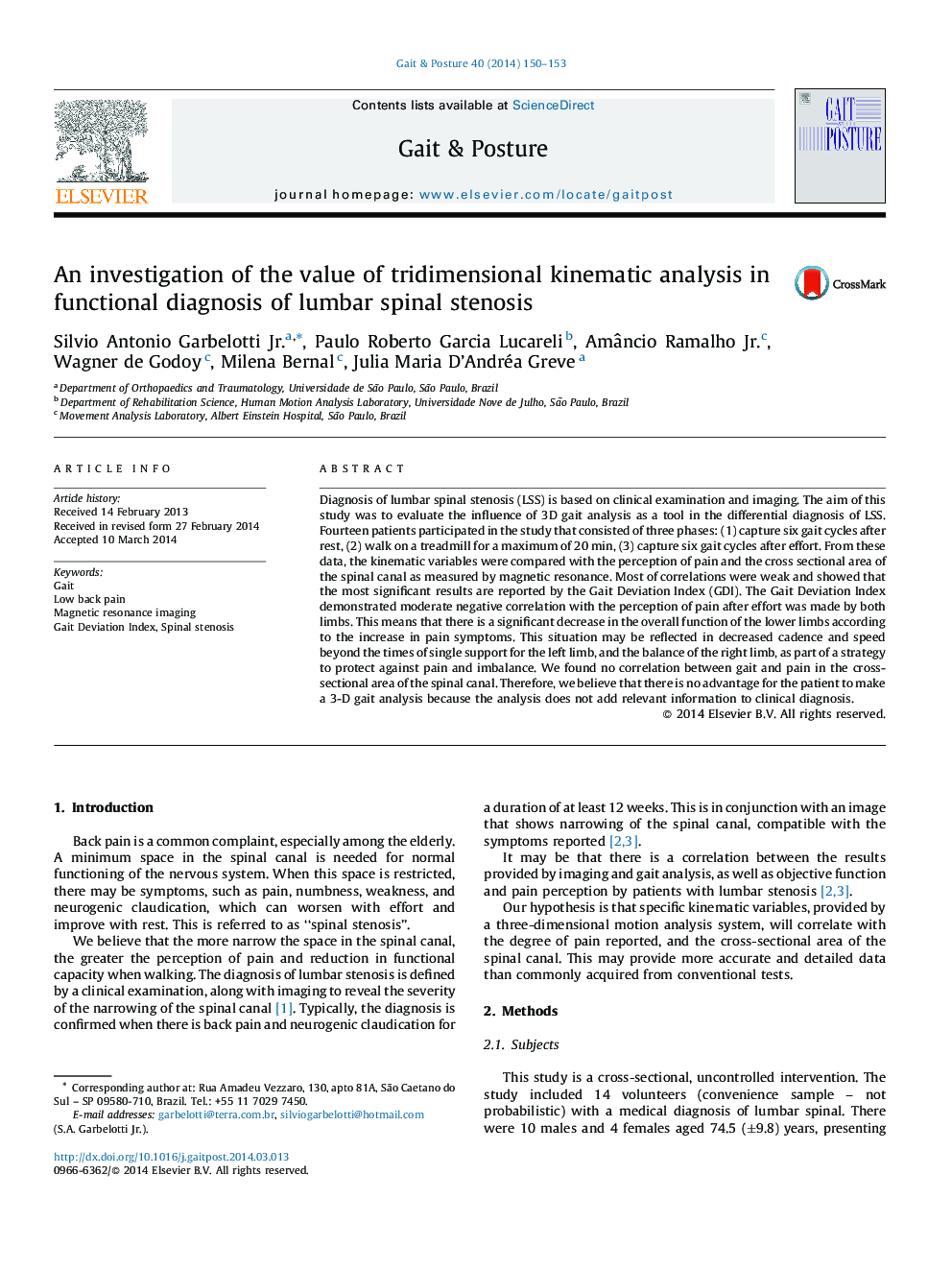| Article ID | Journal | Published Year | Pages | File Type |
|---|---|---|---|---|
| 6206479 | Gait & Posture | 2014 | 4 Pages |
â¢We examine changes in the spatial temoral parameters and GDI pre and post effort.â¢We correlate the kinematic parameters with pain and image exam.â¢Increasing pain perception will decrease GDI.â¢Increased pain or kinematic variations do not correlate with image.
Diagnosis of lumbar spinal stenosis (LSS) is based on clinical examination and imaging. The aim of this study was to evaluate the influence of 3D gait analysis as a tool in the differential diagnosis of LSS. Fourteen patients participated in the study that consisted of three phases: (1) capture six gait cycles after rest, (2) walk on a treadmill for a maximum of 20Â min, (3) capture six gait cycles after effort. From these data, the kinematic variables were compared with the perception of pain and the cross sectional area of the spinal canal as measured by magnetic resonance. Most of correlations were weak and showed that the most significant results are reported by the Gait Deviation Index (GDI). The Gait Deviation Index demonstrated moderate negative correlation with the perception of pain after effort was made by both limbs. This means that there is a significant decrease in the overall function of the lower limbs according to the increase in pain symptoms. This situation may be reflected in decreased cadence and speed beyond the times of single support for the left limb, and the balance of the right limb, as part of a strategy to protect against pain and imbalance. We found no correlation between gait and pain in the cross-sectional area of the spinal canal. Therefore, we believe that there is no advantage for the patient to make a 3-D gait analysis because the analysis does not add relevant information to clinical diagnosis.
